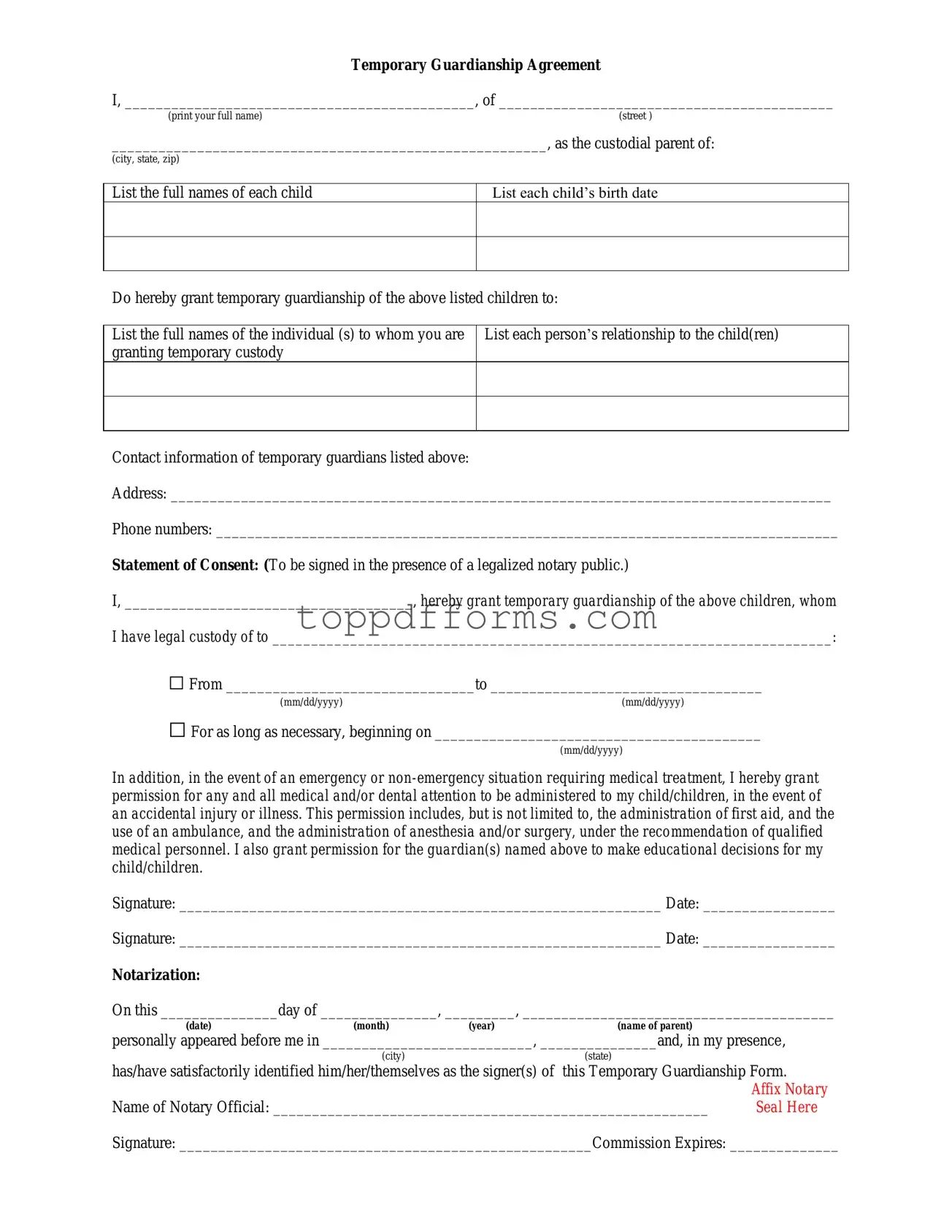What is a Temporary Custody form?
The Temporary Custody form is a legal document that allows one parent or guardian to request temporary custody of a child. This request is often made when the child's primary caregiver is unable to provide care due to various circumstances, such as illness, travel, or other personal issues. The form outlines the reasons for the request and the proposed arrangements for the child's care during this temporary period.
Who can file for Temporary Custody?
Typically, a parent or legal guardian can file for Temporary Custody. In some cases, other relatives, such as grandparents or aunts and uncles, may also be eligible to request temporary custody if they can demonstrate a close relationship with the child and a valid reason for the request.
What information is required on the Temporary Custody form?
The form generally requires detailed information about the child, including their name, age, and current living situation. It also asks for the reasons behind the request for temporary custody, as well as information about the person seeking custody. Additionally, the form may require details about the child's other parent or guardians, including their contact information and any relevant custody arrangements already in place.
How long does Temporary Custody last?
Temporary Custody is intended to be just that—temporary. The duration can vary depending on the circumstances and the court's decision. Typically, it lasts until a specific event occurs, such as the return of the primary caregiver or a court hearing to determine long-term custody arrangements. It is essential to clarify the expected duration when filing the form.
What happens after I submit the Temporary Custody form?
Once the form is submitted, the court will review the request. A hearing may be scheduled, during which both parents or guardians can present their cases. The judge will consider the best interests of the child when making a decision. If granted, the temporary custody order will outline the terms and conditions of custody.
Can the other parent contest the Temporary Custody request?
Yes, the other parent has the right to contest the request for Temporary Custody. They may attend the court hearing to present their perspective and provide evidence supporting their position. The court will evaluate both sides before making a decision that prioritizes the child's welfare.
Is legal representation necessary when filing for Temporary Custody?
While it is not mandatory to have a lawyer when filing for Temporary Custody, having legal representation can be beneficial. An attorney can provide guidance on the process, help prepare the necessary documentation, and advocate for the best interests of the child during court proceedings.
What should I do if my situation changes after filing for Temporary Custody?
If your circumstances change after filing, such as a change in your ability to care for the child or a change in the child's needs, it is important to inform the court immediately. You may need to file a motion to modify the temporary custody order to reflect the new situation. Keeping the court informed ensures that the child's best interests remain the top priority.
